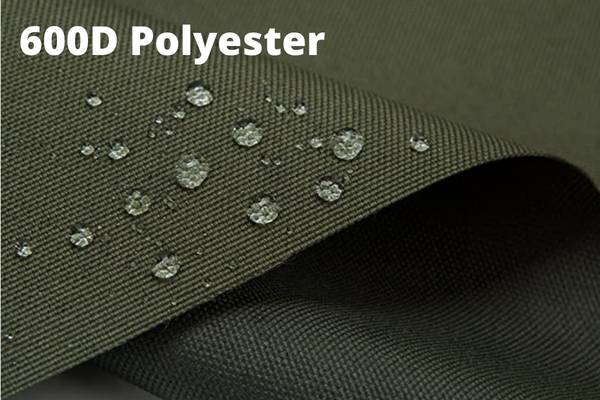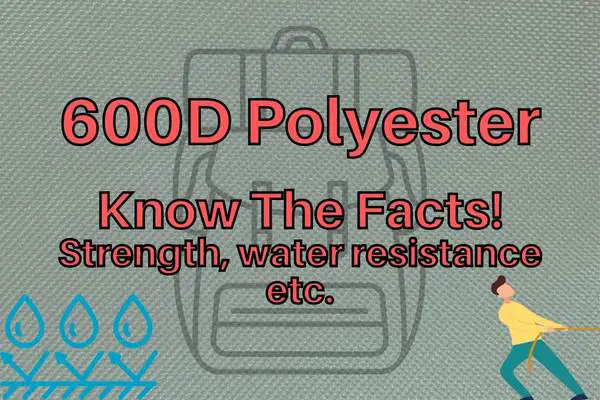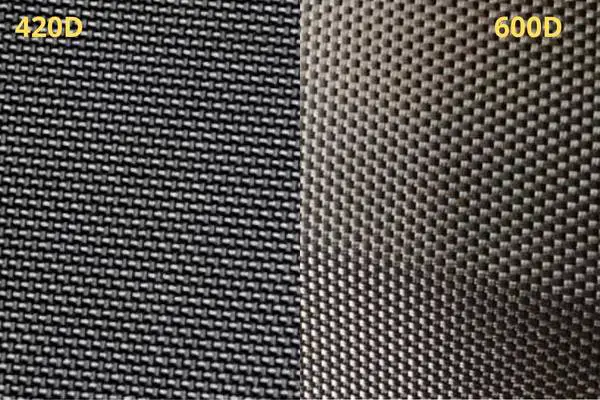When it comes to choosing between 600d and 420d polyester for your gear, it’s essential to understand the differences between these two popular fabric types.
As an outdoor enthusiast and gear expert, I’ve had my fair share of experience with both 600d and 420d polyester.
In this blog post, I will share my insights and knowledge on these two materials, helping you make an informed decision for your next outdoor adventure or backpack purchase.
Contents
What is Polyester?
Before we delve into the differences between 600d and 420d polyester, let’s discuss what polyester is. Polyester is a synthetic fabric made from petroleum-based chemicals.
It is a popular material for outdoor gear due to its durability, water resistance, and lightweight properties. Additionally, polyester is resistant to UV radiation and holds its color well, making it an excellent choice for outdoor products.
The Meaning of “d” in 600d and 420d Polyester
The “d” in 600d and 420d polyester stands for “denier,” which is a unit of measurement for the linear mass density of fibers. In simpler terms, denier refers to the thickness and weight of a fabric’s individual fibers. The higher the denier, the thicker and more durable the fabric is. Therefore, 600d polyester is thicker and more durable than 420d polyester.
Durability: Which is Stronger?
When it comes to durability, 600d polyester is the clear winner. A higher denier count means that the fabric is more robust and resistant to wear and tear. This is particularly important for outdoor gear, such as backpacks and tents, which are exposed to harsh conditions and rough handling.
The Role of the Weave Pattern
It’s worth noting that the durability of a fabric is not solely determined by its denier count. The weave pattern also plays a critical role in a fabric’s strength. Both 600d and 420d polyester can be woven in various patterns, such as plain, twill, or ripstop. A ripstop weave, for example, adds extra reinforcement to the fabric, making it more resistant to tears.
Weight: Which is Lighter?
420d polyester is lighter in weight than 600d polyester. The lower denier count means that the fibers are thinner and lighter, resulting in a lighter overall fabric. This can be an advantage in certain applications, such as ultralight backpacking or running gear, where every ounce counts.
Balancing Weight and Durability
When choosing between 600d and 420d polyester, it’s essential to consider the balance between weight and durability. A lighter fabric may be more comfortable to carry, but it may not hold up as well under heavy use. Conversely, a more durable fabric may add extra weight to your gear. It’s crucial to weigh these factors based on your specific needs and preferences.
Water Resistance: Which is More Waterproof?
Both 600d and 420d polyester have water-resistant properties, but 600D polyester typically offers better water resistance due to its thicker fibers.

Thicker fibers create a tighter weave, making it more difficult for water to penetrate the fabric.
However, it’s important to note that neither 600d nor 420d polyester is entirely waterproof. For complete waterproof protection, additional coatings or treatments may be necessary.
PU and PVC Coatings
Polyurethane (PU) and polyvinyl chloride (PVC) coatings are often applied to polyester fabrics to enhance their water resistance. These coatings create a barrier that prevents water from seeping through the fabric, making it more suitable for wet environments. Keep in mind that these coatings can add weight to the fabric and may reduce breathability.
Breathability: Which is More Breathable?
420d polyester is generally more breathable than 600d polyester. The thinner fibers allow for better air circulation, making it a more comfortable option in warm or humid conditions. However, it’s essential to consider that added coatings, such as PU or PVC, can reduce breathability.
Cost: Which is More Affordable?
420d polyester is typically more affordable than 600d polyester.The lower denier count means that less material is used in the production of the fabric, resulting in a lower cost.
However, it’s important to consider that the price difference may not be significant, and the added durability of 600d polyester may be worth the extra cost in the long run.

Applications: Which is Best for Your Needs?
600d Polyester Applications
Given its durability and water resistance, 600d polyester is ideal for heavy-duty outdoor gear, such as:
- Backpacks for hiking, camping, or travel
- Tents and shelter systems
- Duffel bags and luggage
- Motorcycle and bicycle panniers
420d Polyester Applications
Due to its lighter weight and breathability, 420d polyester is well-suited for:
- Ultralight backpacking gear
- Running vests and hydration packs
- Lightweight rain jackets and windbreakers
Conclusion: 600d vs 420d Polyester
In conclusion, the choice between 600d and 420d polyester ultimately depends on your specific needs and preferences. Both fabrics have their advantages and disadvantages, and the best choice will depend on factors such as weight, durability, water resistance, breathability, cost, and intended use. Below are ten key facts about 600d and 420d polyester to help you make an informed decision:
1. 600d polyester is more durable than 420d polyester.
2. 420d polyester is lighter in weight than 600d polyester.
3. 600d polyester typically offers better water resistance.
4. 420d polyester is generally more breathable.
5. 420d polyester is usually more affordable.
6. The durability of a fabric depends on both its denier count and weave pattern.
7. PU and PVC coatings can enhance water resistance but may reduce breathability.
8. 600d polyester is ideal for heavy-duty outdoor gear.
9. 420d polyester is well-suited for lightweight and breathable gear.
10. The best choice between 600d and 420d polyester depends on your specific needs and preferences.
FAQs
Is 420D nylon strong?
420D nylon is a relatively strong and durable material, commonly used in backpacks, luggage, and outdoor gear. However, its strength can vary depending on the specific application and construction of the product.
Is 420D nylon durable?
Yes, 420D nylon is considered to be a durable material. It is commonly used in backpacks, luggage, and outdoor gear due to its abrasion resistance and strength. However, the durability of the nylon can also depend on the specific construction and treatment of the material.
Which is better 600D or 420D?
It depends on the context and intended use. 600D is generally considered more durable and suitable for heavy-duty applications, while 420D is lighter and more suitable for lighter applications. However, other factors such as the quality of the material, construction, and intended use should also be considered.
What does 420D fabric mean?
420D fabric refers to a type of polyester fabric that has a denier of 420. This means that the fabric is relatively lightweight and durable, making it suitable for use in a variety of applications, such as backpacks, tents, and luggage.
Is 420D nylon good?
Yes, 420D nylon is a durable and strong material that is commonly used for backpacks, luggage, and other outdoor gear. It is also water-resistant, making it a good choice for outdoor activities.
What does 420D polyester mean?
420D polyester refers to a type of polyester fabric that has a denier count of 420. This means that the fabric is relatively lightweight and durable, making it a popular choice for bags, backpacks, and other outdoor gear.




